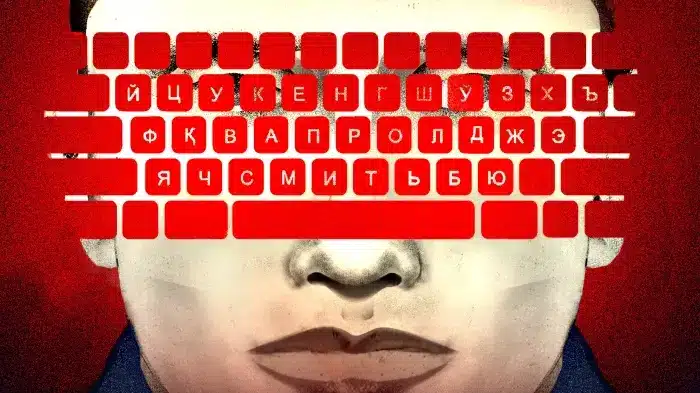
Technology and State Surveillance in Belarus: How Far Does Control Go?

- The Digital Eye of Authoritarianism
- The Roots of Control: Surveillance Before the Digital Age
- Building the Modern Surveillance State
- Digital Censorship and Internet Control
- The Technology Behind Surveillance
- The Role of Telecom Providers and Private Companies
- Citizen Tracking and the Erasure of Privacy
- International Support and Sanctions
- Resistance Through Technology: Hacktivism and Encryption
- The Future of Digital Freedom in Belarus
- Control Versus Resilience
The phrase “Technology and State Surveillance in Belarus: How Far Does Control Go?” captures one of the defining conflicts of the 21st century: the struggle between technological progress and personal freedom. In Belarus, a country often called “Europe’s last dictatorship,” technology has become both a tool of empowerment and a weapon of oppression.
Since the 2020 protests following the disputed presidential election, the Belarusian government has intensified its use of digital surveillance. Through a complex network of monitoring systems, facial recognition, and data collection, authorities have built a digital fortress that watches every online move of its citizens.
Yet, beneath this regime of control, there is also digital resistance—hackers, journalists, and everyday citizens fighting to reclaim their privacy and freedom through encryption, VPNs, and underground information networks.
The Roots of Control: Surveillance Before the Digital Age
Belarus’s obsession with surveillance did not begin with the Internet. The legacy of the KGB (which still retains its Soviet-era name in Belarus) established a culture of constant observation. Even before the rise of smartphones and social media, state authorities relied on informants, phone tapping, and mail censorship to monitor dissent.
During the Soviet era, this system was justified as a means of protecting the state from “foreign influence.” In independent Belarus under Alexander Lukashenko, the same logic has been used to suppress political opposition, journalists, and activists.
The digital revolution merely provided new tools to enforce an old principle: absolute state control over information.

Building the Modern Surveillance State
In the early 2000s, Belarus began to construct one of the most extensive surveillance infrastructures in Eastern Europe. Through cooperation with Russian and Chinese technology providers, the government invested heavily in cybersecurity and data monitoring systems—not for protection, but for control.
According to reports from Freedom House, the country’s Internet is classified as “Not Free.” This rating reflects the government’s ability to:
- Monitor online traffic through centralized Internet Service Providers (ISPs).
- Block independent news websites and social networks.
- Track the digital identities of protest participants.
The Ministry of Internal Affairs and the Operational and Analytical Center (OAC) play central roles in controlling information flow, while the Beltelecom monopoly ensures all data routes through state-controlled channels.
Digital Censorship and Internet Control
Belarusian authorities use multiple layers of censorship to regulate online activity. The Law on Mass Media (2018) expanded government powers to block websites without court orders, forcing media outlets to register with the Ministry of Information. Independent news platforms such as TUT.by and Nasha Niva were blocked or labeled as “extremist.”
During major protests, the regime deployed deep packet inspection (DPI) technology—purchased from Western and Chinese firms—to throttle or shut down Internet access nationwide. The most infamous blackout occurred in August 2020, when the Internet was almost completely shut down for three days.
As Access Now reports, Belarus remains one of the few European countries to have repeatedly implemented nationwide Internet blackouts, costing millions of dollars and silencing millions of voices.
The Technology Behind Surveillance
The backbone of Belarusian surveillance lies in its technical infrastructure. Systems modeled after Russia’s SORM (System for Operative Investigative Activities) enable security agencies to access communications data without judicial oversight.
Key technologies include:
- Facial Recognition Systems: Cameras in public transport, streets, and stadiums are equipped with AI-powered recognition tools, often supplied by Russian or Chinese companies.
- Phone Interception: State agencies use IMSI catchers to intercept mobile communications and track SIM cards.
- Social Media Monitoring: Specialized units track activity on Telegram, VKontakte, and Instagram, identifying participants in anti-government groups.
This combination creates an ecosystem of total surveillance—one where privacy is virtually non-existent and dissent is digitally traceable.
The Role of Telecom Providers and Private Companies
Telecommunication companies are legally required to cooperate with government requests for user data. Under Belarusian law, all ISPs must install surveillance equipment allowing the OAC and KGB to directly access traffic data in real time.
State-owned Beltelecom controls international Internet gateways, while mobile operators like A1 Belarus and MTS have faced accusations of compliance with censorship orders.
Private tech firms, both domestic and foreign, have also been implicated. In some cases, surveillance software used in Belarus was linked to companies in Citizen Lab investigations, highlighting how authoritarian regimes acquire advanced tools from global suppliers.

Citizen Tracking and the Erasure of Privacy
Belarusian authorities collect and analyze massive amounts of personal data. From online purchases to phone metadata, from transport card use to biometric information, every citizen leaves a digital footprint the state can trace.
Mass Data Collection
Belarus maintains centralized databases that store biometric information, passport details, and even vehicle movements. Traffic cameras are integrated into the national data network, allowing automated recognition of license plates and personal identification.
Criminalizing Online Expression
Posting a meme or commenting on a banned Telegram channel can lead to arrest. Thousands have been charged under “extremism” laws for online activity, creating a climate of digital fear.
Psychological Impact
The omnipresence of digital surveillance has instilled a sense of paranoia. Citizens self-censor online, aware that even private chats may not be safe. As one activist told Belsat TV, “We live in a country where silence feels safer than speech.”
International Support and Sanctions
The global community has responded to Belarus’s surveillance regime with sanctions and support programs for independent journalists and NGOs. The European Union, the United States, and Canada have imposed restrictions on Belarusian officials and companies linked to cyber repression.
At the same time, organizations like Human Rights Watch and Amnesty International document digital rights abuses, keeping international attention on Belarus’s technological authoritarianism.
Despite these efforts, enforcement remains difficult. The Belarusian government often uses third-country intermediaries to purchase software, bypassing direct sanctions.
Resistance Through Technology: Hacktivism and Encryption
Even under intense repression, technology also fuels resistance. Belarusian activists have become experts in digital self-defense—from encrypted messaging to cyber sabotage.
The Belarusian Cyber-Partisans
This anonymous collective of hacktivists gained international fame for cyberattacks against state databases, including police servers and railway systems. Their goal: expose corruption and hinder state surveillance operations.
VPNs and Encrypted Networks
Tools like Tor, Signal, and ProtonVPN have become essential for journalists and citizens seeking uncensored access to information. Despite efforts to block these tools, underground networks share access and guides for safe browsing.
Digital Education and Solidarity
Exiled organizations in Lithuania and Poland conduct workshops on digital safety for Belarusians. These initiatives aim to build a culture of cybersecurity that empowers citizens rather than isolates them.
The Future of Digital Freedom in Belarus
The future of Technology and State Surveillance in Belarus: How Far Does Control Go? depends on both internal resistance and international accountability. As technology evolves, so too does the battle for control over data and truth.
Emerging technologies like artificial intelligence, predictive analytics, and digital ID systems could further tighten the regime’s grip—or, conversely, give citizens new tools for subversion.
Global tech companies face ethical dilemmas: should they sell or restrict access to technologies that can be weaponized for surveillance? The answer will shape not only Belarus’s future but also the future of digital freedom worldwide.
Control Versus Resilience
Belarus stands at the crossroads of innovation and oppression. The government’s use of technology demonstrates how digital infrastructure can evolve into a mechanism of total control. Yet, in parallel, citizens, journalists, and technologists continue to prove that resistance is also digital.
The story of Technology and State Surveillance in Belarus: How Far Does Control Go? is not just about control—it’s about resilience. Every encrypted message, every hacked database, every hidden server is a reminder that freedom finds a way, even in the darkest networks.
In the long run, the digital future of Belarus will be determined not by the power of the state’s algorithms, but by the courage of those who refuse to be silenced.






Leave a Reply
You must be logged in to post a comment.